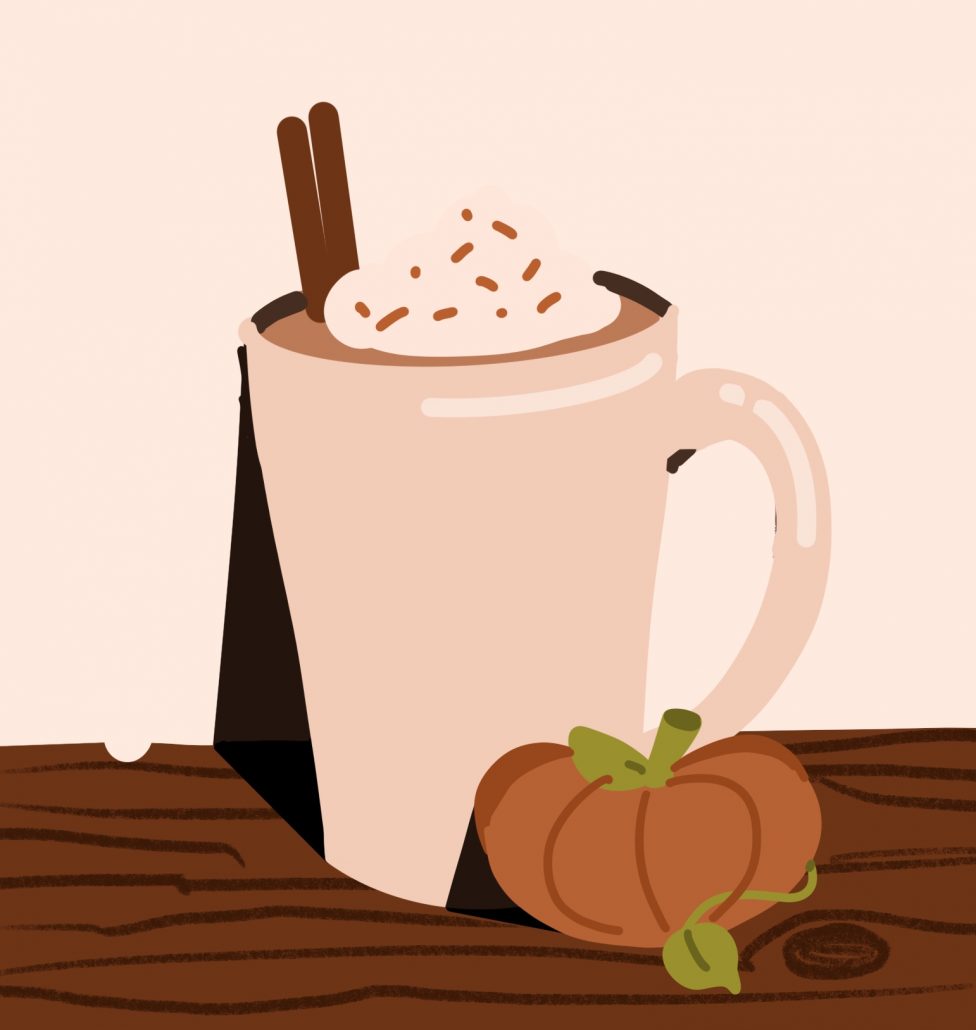Eating L.A. Before it Eats Itself: Leave white girls and their pumpkin spice obsession alone

Under the sweltering heat radiating from a relentless sun on the city’s concrete floor, I wipe the sweat that’s gathered under my lips and remind myself that it is, indeed, fall.
Despite the warm weather, it’s fall. A slow, lagging fall, dragging its feet in the light of a powerful sun, but fall nonetheless. Sometimes, when a thin layer of clouds wraps over Southern California for more than a couple early morning hours, it really feels like fall.
In Los Angeles, autumn is subtle. Catch the chilly breeze whipping around sunkissed hair, the colder nights that require a sweater or — god forbid — a jacket, the smell of clean air as the blanket of smog lifts. In many ways, Southern California fall is less of a weather pattern and more of an energy, one leaning into darker nights, softer clothes and warmer foods.
For many, the first indicator of fall is the pumpkin spice latte’s triumphant return to the Starbucks menu, blessing the color scheme with orange hues, exciting a nation for the sweet, comforting spices of colder seasons.
For others, the first indicator of fall is the incomprehensible feeling of rage towards the pumpkin spice latte. You like pumpkin spice lattes? I don’t. I hate the taste. Pumpkin spice lattes are basic. Pumpkin spice lattes are stupid. Pumpkin spice lattes are for basic, unintelligent girls.
The inevitable annual anger toward pumpkin spice and other fall-flavored foods is a phenomenon that divides a nation, led by dissenters invested in separating themselves from the stereotypes they observe and perpetuate surrounding pumpkin spice, particularly that women are the primary consumers of fall products.
Products that have a large female audience are often hyper-criticized, ridiculed and lampooned. The return of pumpkin spice usually indicates the return of pumpkin spice jokes on social media. The jokes about girls and pumpkin spice fit under a larger umbrella of jokes about girls and fall weather, girls and fall clothing, girls and fall foods.
Maybe this is my bias as a girl, but sometimes it feels as if the jokes are not an attempt to make fun of an annual trend, but instead function as a vehicle to hate a general behavior of women.
For some men, pumpkin spice appears as yet another vapid interest of young girls, something they are too intelligent and defined to enjoy. For some women, hating pumpkin spice is an easy way to achieve individuality from the masses, a unique perspective. For others, pumpkin spice feels like soulless corporate bait, and those who succumb to it are stupid.
There are a lot of easy ways to hate either the fans of pumpkin spice or pumpkin spice itself, but it’s hard to comprehend why this season and its flavors are so divisive. Surely, there must be more satisfying ways to claim superiority over others. It feels like a waste of energy to dislike a flavor just because others love it, and it feels like an attempt to humiliate others, especially girls, for enjoying it.
Yes, pumpkin spice season is upon us. Yes, it is overwhelming to step into Starbucks or Trader Joe’s and see the annual overload of cinnamon and ginger, sweet pumpkin and spiced apple. Maybe it could be seen as a corporate exploitation of our yearning for fall. Or, maybe, it is an aspect of fall that people truly look forward to.
In Southern California, there are few ways to celebrate fall. There are no changing leaves, no rainstorms, no frostbitten nights. Instead, we have to rely on the foods that comfort us, and I can’t think of a better way to enjoy the season.
So if the hateful gurglings against pumpkin spice begin to rise, try, perhaps, to let the basic white girls have this one.
Christina Tiber is a senior writing about food. Her column, “Eating L.A. Before It Eats Itself,” runs every other Thursday.

